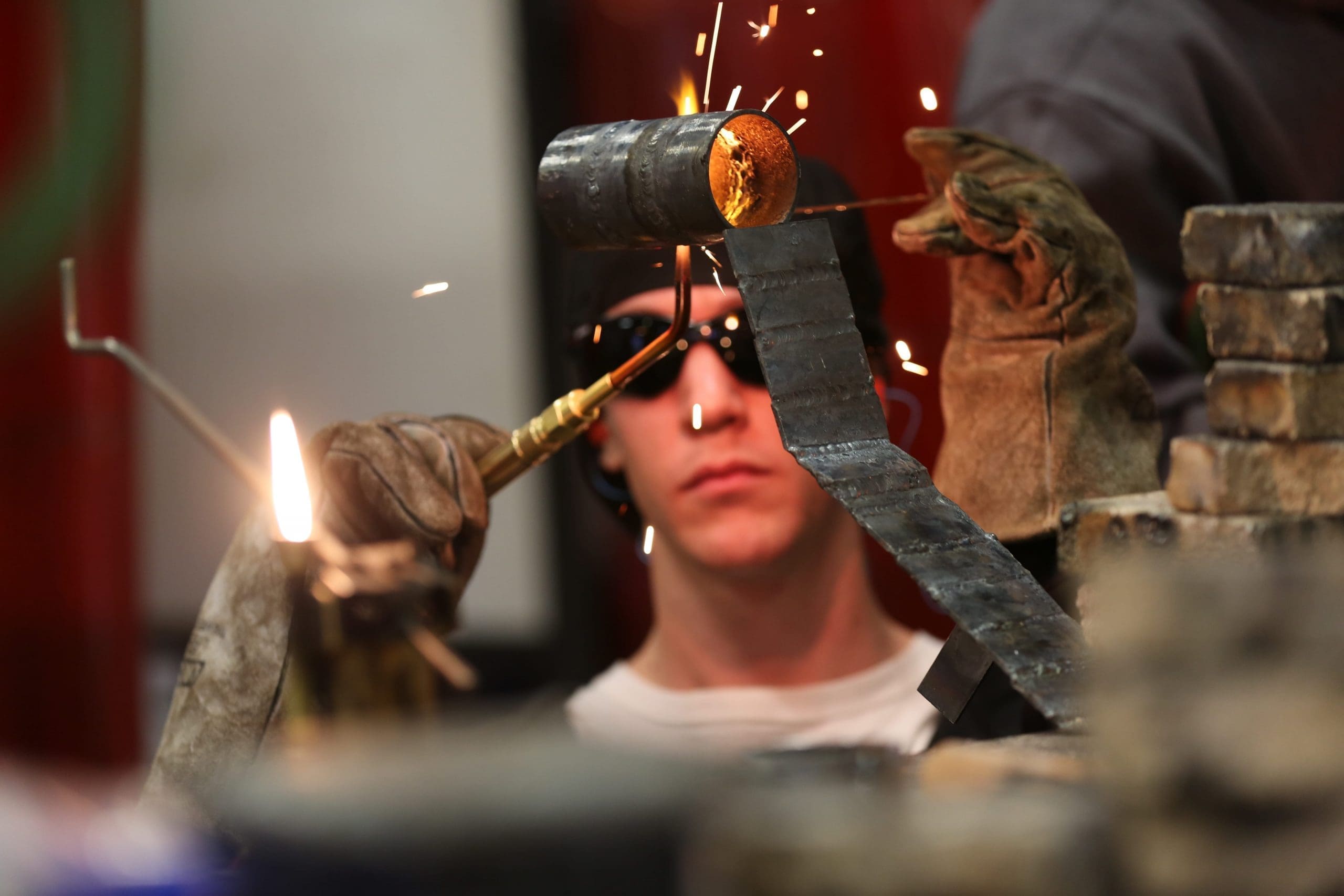Welders are needed to work in almost every industry, just by the very definition of what welding is: permanently joining pieces of metal. Think of the job possibilities! There’s construction, engineering, robots, aeronautics, ship building and repair, pipeline installation, NASCAR and the military, to name a few. Because of the high demand in so many industries, welders can change industries without changing careers—and may result in high earning potential. If you’re interested in becoming a welder, here’s what you need to know about the different types of welding.
Shielded Metal Arc Welding (SMAW)
Also known as “stick welding,” it is generally used in construction, fabrication, pipeline work and in the repair of heavy equipment. SMAW is a type of arc welding that uses a hand-held welding rod.
Gas Metal Arc Welding (GMAW)
MIG welding (Metal Inert Gas welding), as it is also known, is similar to SMAW because the electrode is also consumable. The difference is that in GMAW, a solid wire fed through the welding gun melts, rather than a rod.
Flux Cored Arc Welding (FCAW)
Yet another type of welding, FCAW provides the speed of GMAW and the efficiency of SMAW. It also uses a wire that feeds through a welding gun, but this one has a flux core like the electrodes used in stick welding, eliminating the need for inert gas.
How to become a welder
Enroll in the welding programs at Summit College, and you can qualify to work as a welder in a variety of industries in just nine months. Choose from convenient day, afternoon or evening schedules in any of Summit’s three locations (Colton, El Cajon and Santa Ana). You’ll get hands-on instruction from industry pros in state-of-the-art welding facilities. Moreover, you’ll benefit from personalized instruction and career services to help you find that important first job.
Call Summit College today and train for a welding career, one that O*NET OnLine expects to grow by 128,500 jobs between 2014 and 2024.
Tags: welding types



